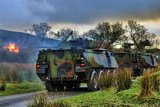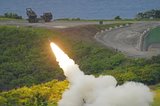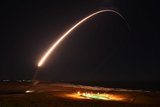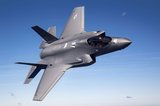US jets intercept Russian bombers off Alaskan coast
US fighter jets intercepted two long-range Russian 'Bear' bombers in international airspace off western Alaska, the North American Aerospace Defense Command said 12 May.
The long-range Tupelev Tu-95 bombers were 'intercepted and visually identified' 11 May morning by a pair of F-22 Raptors as the Russian aircraft flew just north of Alaska's Aleutian islands, said Canadian Army Maj Andrew Hennessy, of NORAD public affairs.
'At no time did the Russian bombers enter North American sovereign airspace,' Hennessy said in a statement to AFP.
He added that the Alaska-based US jets monitored the Russians until the bombers left an area known as the Air Defense Identification Zone along the Aleutians, heading west.
That zone extends about 200 miles (322km) from the coastline, mostly in international airspace.
12 May marks the 60th anniversary of the founding of NORAD, a joint US-Canadian command charged with aerospace warning and control for North America.
In April 2017, NORAD and the Pentagon said Tu-95 Bear bombers - four-engine Cold War-era turboprop giants that can carry nuclear weapons - were spotted in international airspace on three occasions, twice near the Aleutians and once near mainland Alaska and Canada.
That was the first sighting of such Russian long-range bombers around Alaska in about two and a half years, a Pentagon spokesman said at the time.
Tensions between Russia and the United States and its NATO allies are running at levels not seen since the Cold War.
The Alaska incident comes after a Russian Sukhoi Su-27 fighter jet buzzed a US Navy P-8 Poseidon surveillance plane in international airspace over the Baltic Sea, US media reported, citing the US Navy.
Earlier, on 29 January, the US Navy released video of a Russian Su-27 intercepting a US EP-3 Aries surveillance plane in international airspace over the Black Sea.
The interception, which lasted two hours and 40 minutes, was "unsafe" because the Russian jet was 'closing to within five feet and crossing directly' through the surveillance plane's flight path, 'causing the EP-3 to fly through the Su-27's jet wash,' the US Navy said in a statement.
NATO naval officials in late 2017 also reported Russian submarines probing underseas data cables in the North Atlantic.
US Defense Secretary Jim Mattis said in January, as he unveiled the Pentagon's national defense strategy, that the US is facing 'growing threats' from Russia and China, and he warned that the US military's advantages have eroded in recent years.
Related Equipment in Defence Insight
More from Defence Notes
-
![How might European countries look to tackle drone incursions?]()
How might European countries look to tackle drone incursions?
Disruption of infrastructure in Europe, whether by cyberattack, physical damage to pipelines or uncrewed aerial vehicles flying over major airports, as has happened more recently, is on the rise. What is the most effective way of countering the aerial aspect of this not-so-open warfare?
-
![Taiwan approved for $11 billion weapon purchase from US]()
Taiwan approved for $11 billion weapon purchase from US
The US State Department’s approval of a multi-billion-dollar sale of weapons to Taiwan includes tactical mission networks equipment, uncrewed aerial systems, artillery rocket systems and self-propelled howitzers as well as anti-tank guided missiles.
-
![US National Security Strategy prioritises advanced military capabilities and national industry]()
US National Security Strategy prioritises advanced military capabilities and national industry
The 2025 NSS has emphasised investment in the US nuclear and air defence inventory and national industry, but it leaves multiple unanswered questions on how the White House will implement this approach.
-
![Canada set to look away from its neighbour and across the Atlantic for partners]()
Canada set to look away from its neighbour and across the Atlantic for partners
While non-EU UK struggles to join the Security Action for Europe initiative, which provides loans for defence programmes, Canada has become the first country outside Europe to get access – and did so for a nominal fee.
























